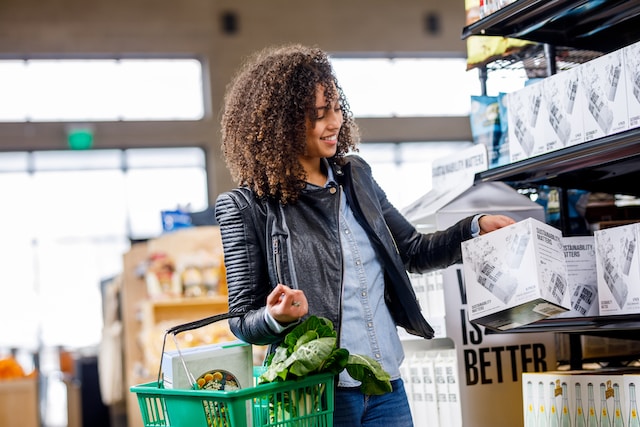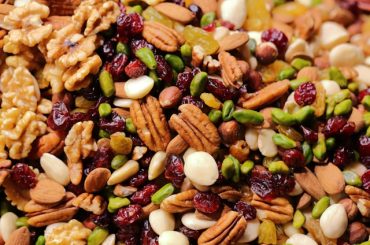Before we dive deep into the SWOT analysis, let’s get the business overview of Morrisons. Morrisons (Wm Morrison Supermarkets Limited) is a leading UK supermarket chain founded in 1899 by William Morrison in Bradford, West Yorkshire.
As of my last knowledge update in September 2021, Morrisons was the fourth-largest grocery retailer in the United Kingdom, operating over 490 stores nationwide. The company retails a wide range of products, including groceries, fresh and frozen foods, household goods, and general merchandise.
Critical Aspects of Morrisons:
- Vertically Integrated Supply Chain: Morrisons operates a vertically integrated supply chain, which means it owns and controls several aspects of its supply chain, such as farms, food processing facilities, and distribution centers. This integration allows the company to have greater control over the quality and cost of its products.
- Market Street: Morrisons is known for its unique in-store concept called “Market Street,” where customers can find various specialty counters, such as butchers, fishmongers, bakers, and florists. This setup aims to provide a more personalized shopping experience and differentiate Morrisons from its competitors.
- Private Label Brands: The company offers a wide range of private label (own-brand) products, which are generally more affordable than branded alternatives. Morrisons has several private label lines, including the “M Signature” premium range, the “Nutmeg” clothing line, and the “Free From” range for customers with dietary restrictions.
- Online Presence and Partnerships: To cater to the growing demand for online shopping, Morrisons has expanded its e-commerce presence. The company partnered with Amazon for same-day grocery delivery through Amazon Prime Now and operated its online grocery platform, Morrisons.com. Additionally, it offers the “Morrisons More” loyalty program, which provides customers with personalized offers and rewards.
- Sustainability and Social Responsibility: Morrisons has been committed to sustainable and responsible business practices, reducing its environmental impact, supporting local producers, and promoting animal welfare. The company has set several targets to minimize waste, reduce greenhouse gas emissions, and increase the use of renewable energy in its operations.
Morrisons has been guided by its ‘Fix, Rebuild, Grow, Sustain’ strategy and has aimed to build a brand that is popular and accessible, broader and stronger, contributing to the delivery of profitable and capital-light growth, mainly through leveraging further our vertically integrated assets.
- Total Group revenue for the 52 weeks ended 31 October 2022 was £18,479m, compared to £17,983m in a similar period in the previous year.
- EBITDA before exceptionals and supply chain disruption costs was £903m (39 weeks ended 31 October 2021: £670m).

Here is the SWOT analysis for Morrisons
A SWOT analysis is a strategic planning tool used to evaluate the Strengths, Weaknesses, Opportunities, and Threats of a business, project, or individual. It involves identifying the internal and external factors that can affect a venture’s success or failure and analyzing them to develop a strategic plan. In this article, we do a SWOT Analysis of Morrisons.
SWOT Analysis: Meaning, Importance, and Examples
Strengths
- Vertically Integrated Supply Chain: Morrisons’ unique vertically integrated supply chain allows the company to have greater control over product quality, cost, and availability. This advantage helps Morrisons maintain competitive pricing and offer fresh, high-quality products to its customers.
- Market Street Concept: The Market Street concept provides a unique shopping experience for customers, setting Morrisons apart from its competitors. Customers can find fresh, high-quality products and personalized service with various specialty counters, such as butchers, fishmongers, bakers, and florists.
- Private Label Brands: Morrisons’ range of private label products offers customers a choice of high-quality, affordable alternatives to branded products. These own-brand products help improve customer loyalty and contribute to higher profit margins for the company.
- Online Presence and Partnerships: Morrisons has proactively expanded its e-commerce presence and partnered with key players like Amazon for same-day grocery delivery. This strategy has helped the company reach a broader customer base and adapt to the growing trend of online shopping.
- Strong Local Focus: Morrisons strongly supports local producers and sourcing products from the UK. This approach resonates with customers who value local products and contributes to the company’s image as a responsible and sustainable business.
- Commitment to Sustainability: Morrisons’ focus on sustainability and responsible business practices, such as reducing waste and promoting animal welfare, has strengthened its reputation among customers increasingly conscious of environmental and social issues.
- Loyalty Program: The “Morrisons More” loyalty program provides personalized offers and rewards, encouraging repeat purchases and helping to build stronger relationships with customers.
Weaknesses
- Limited International Presence: Unlike some of its competitors, Morrisons has a limited international presence, with its operations primarily focused on the UK. This lack of geographical diversification makes the company more vulnerable to local economic fluctuations and competition in the domestic market.
- Market Share Erosion: The rise of discount retailers like Aldi and Lidl has disrupted the UK grocery market, resulting in a decline in market share for Morrisons and other traditional supermarket chains. The company must continue to innovate and adapt to stay competitive against these low-price competitors.
- Slower E-commerce Growth: Although Morrisons has tried expanding its online presence, the company has been relatively slow in adopting e-commerce compared to some of its competitors. As a result, Morrisons may have missed out on opportunities to capture a larger share of the rapidly growing online grocery market.
- Store Format Limitations: Morrisons’ primary focus on large-format supermarkets may limit its ability to respond to changing customer preferences for smaller, local, and more convenient shopping options. Competitors with more diverse store formats, like Tesco and Sainsbury’s, may be better positioned to adapt to these trends.
- Brand Perception: While Morrisons has a strong reputation for fresh products and the Market Street concept, the company may still struggle with brand perception compared to premium competitors like Waitrose or discount retailers like Aldi and Lidl. Enhancing brand perception and value proposition can help Morrisons appeal to a broader customer base.
Opportunities
- Expansion of E-commerce: The ongoing growth of online shopping presents a significant opportunity for Morrisons to expand its e-commerce operations further. By investing in its online platform, improving delivery capabilities, and enhancing the user experience, the company can attract more online customers and increase its market share in the online grocery segment.
- Diversification of Store Formats: Adapting to changing customer preferences by diversifying store formats, such as opening smaller, local stores or convenience stores, can help Morrisons reach new customers and better cater to their needs. This strategy can also help the company to compete more effectively with other retailers offering different store formats.
- International Expansion: Morrisons can explore opportunities to expand its presence internationally through acquisitions or organic growth. By entering new markets, the company can diversify its revenue sources, reduce its reliance on the UK market, and mitigate the risks associated with local economic fluctuations.
- Strengthening Private Label Offerings: Morrisons can continue to invest in and expand its private label product range, focusing on providing high-quality, affordable alternatives to branded products. This strategy can help to improve customer loyalty, increase profit margins, and differentiate the company from its competitors.
- Sustainable Practices and Social Responsibility: As consumers become increasingly conscious of environmental and social issues, Morrisons can capitalize on this trend by focusing on sustainability initiatives and responsible business practices. By promoting eco-friendly products, reducing waste, and supporting local producers, the company can strengthen its reputation and appeal to environmentally conscious customers.
- Strategic Partnerships and Collaborations: Morrisons can explore opportunities to form strategic partnerships or collaborations with other companies, such as meal kit providers, technology providers, or delivery services. These partnerships can help the company to expand its product and service offerings, enhance its online capabilities, and reach new customer segments.
- Focus on Health and Wellness: With a growing consumer interest in health and wellness, Morrisons can expand its range of healthy food options, organic products, and products catering to specific dietary needs. Morrisons can attract new customers and capitalize on this growing market segment by positioning itself as a health-conscious retailer.
Threats
- Intense Competition: The UK grocery market is highly competitive, with major players such as Tesco, Sainsbury’s, Asda, Aldi, and Lidl competing for market share. This competition pressures Morrisons to maintain competitive prices, differentiate its offerings, and continually innovate to retain and attract customers.
- Growth of Discount Retailers: The rise of discount retailers like Aldi and Lidl has disrupted the traditional grocery market, attracting price-sensitive customers with their low-cost offerings. This trend poses a significant threat to Morrisons, which must adapt its pricing strategies and value proposition to compete effectively with these retailers.
- Changing Consumer Preferences: Consumers increasingly seek convenience, personalized experiences, and healthier food options. Morrisons must adapt to these changing preferences to stay relevant and maintain customer loyalty.
- E-commerce and Digital Disruption: The rapid growth of e-commerce and digital technologies has transformed the retail landscape. Morrisons faces the challenge of keeping pace with technological advancements and ensuring its online presence is competitive with other retailers who have already established a strong e-commerce presence.
- Regulatory and Political Factors: Changes in regulations, such as food safety, environmental, or labor laws, can impact Morrisons’ operations and profitability. Additionally, political factors, such as Brexit, may lead to supply chain disruptions, fluctuating exchange rates, or import/export restrictions, posing risks to the business.
- Economic Uncertainty: Economic fluctuations and uncertainty can influence consumer spending patterns, impacting Morrisons’ sales and profitability. The company must be prepared to adapt to these changes and manage its cost structure effectively to maintain profitability during economic downturns.
- Supply Chain Disruptions: Morrisons’ vertically integrated supply chain, while providing some advantages, can also be vulnerable to disruptions caused by factors such as extreme weather events, geopolitical tensions, or pandemics. These disruptions can impact product availability, quality, and cost, affecting the company’s overall performance.









